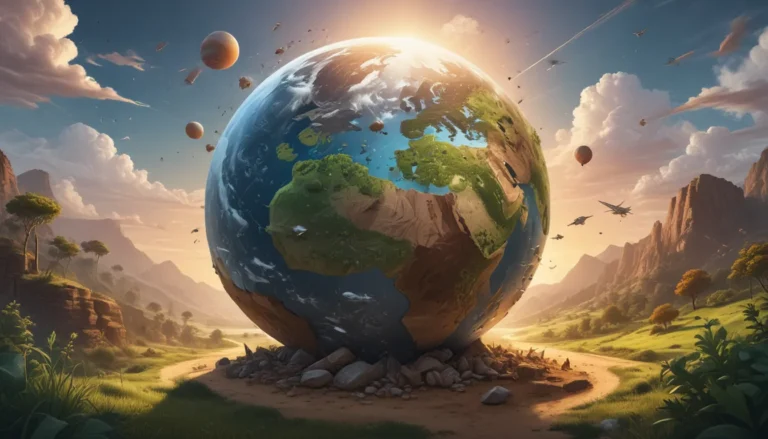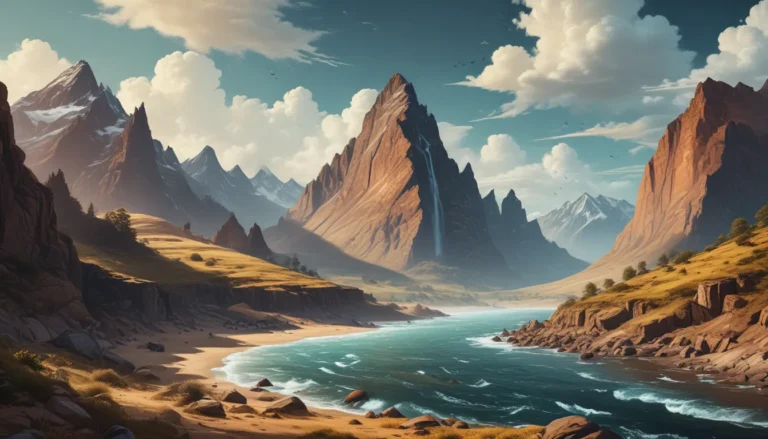A Note About Images: The images used in our articles are for illustration purposes only and may not exactly match the content. They are meant to engage readers, but the text should be relied upon for accurate information.
The hydrosphere, comprising all the water elements on our planet, is a vital and captivating component of Earth’s ecosystem. From the majestic oceans to the serene lakes, the hydrosphere plays a pivotal role in sustaining life as we know it. Join us as we embark on a journey to uncover 16 mind-blowing facts about the hydrosphere that will educate and astonish you. Delve into the depths of this dynamic domain and marvel at the wonders and mysteries it holds.
Delving into the Hydrosphere
The hydrosphere encompasses approximately 71% of the Earth’s surface, serving as a crucial regulator of climate and providing a habitat for diverse ecosystems. This vast expanse of water, in its various forms, influences weather patterns and supports countless marine species, showcasing its incredible versatility.
Exploring the Oceanic Marvels
- The Pacific Ocean: Spanning an area of about 63 million square miles, the Pacific Ocean stands as the largest and deepest ocean on the planet, plunging to depths exceeding 36,000 feet in the Mariana Trench.
- The Great Barrier Reef: Stretching over 1,400 miles off the Australian coast, the Great Barrier Reef is not only a stunning sight but also the largest living structure on Earth, harboring a myriad of marine life forms.
Unveiling the Hydrosphere’s Role
The hydrosphere plays a pivotal role in regulating the Earth’s climate, acting as a massive heat sink that cools the surface through processes like evaporation and condensation. It serves as a home to unique ecosystems such as coral reefs and mangrove forests, each with its own set of life forms and ecological dynamics.
Journey Through the Hydrological Cycle
The hydrological cycle, also known as the water cycle, is a continuous process that circulates water around the Earth, involving evaporation, transportation through the atmosphere, and precipitation back to the surface. This perpetual flow of water sustains life and shapes weather patterns globally.
Unveiling Aquatic Wonders
- The Dead Sea: Known for its extreme saltiness, the Dead Sea boasts a salt concentration of around 34%, making it a challenging environment for any living organisms to survive.
- Glaciers and Ice Caps: Despite water covering most of Earth’s surface, only a small fraction is freshwater, with the majority locked away in expansive ice caps and glaciers, inaccessible for human use.
Discovering Oceanic Currents
- The Gulf Stream: This powerful ocean current, flowing along the U.S. eastern coast, transports warm water from the equator to the North Atlantic, influencing climate patterns in surrounding regions.
- The Mariana Trench: Nestled in the western Pacific Ocean, the Mariana Trench descends to a staggering depth of approximately 36,070 feet, marking the deepest point in the world’s oceans.
Embracing Marine Biodiversity
The hydrosphere provides a rich habitat for numerous marine species, from vibrant coral reefs to mysterious deep-sea trenches. The interconnectedness of this aquatic realm with other Earth systems, including the atmosphere, biosphere, and geosphere, forms a complex network that shapes climate, life, and geological processes.
Nurturing a Sustainable Future
Understanding and preserving the hydrosphere is essential for ensuring the well-being of our planet and future generations. From water conservation to pollution mitigation, caring for this precious resource is paramount. By valuing the intricacies and wonders of the hydrosphere, we can strive towards a sustainable future where water resources are safeguarded and cherished.
FAQs About the Hydrosphere
- What is the hydrosphere? The hydrosphere comprises all water on and below Earth’s surface, including oceans, rivers, lakes, groundwater, and glaciers.
- How much of Earth is covered by the hydrosphere? Approximately 71% of the Earth’s surface is enveloped by the hydrosphere, with oceans holding about 96.5% of the total water volume.
- What is the water cycle? The continuous movement of water on Earth, involving evaporation, condensation, precipitation, and runoff, is known as the water cycle.
- How does the hydrosphere influence climate? Through processes like evaporation, condensation, and ocean currents, the hydrosphere plays a crucial role in regulating temperature and shaping climate patterns.
- What threats does the hydrosphere face? Pollution, overconsumption, climate change, and habitat destruction pose significant threats to the delicate balance of the hydrosphere.
As we navigate the vast waters of the hydrosphere, let us embrace its wonders, sustainability, and interconnectedness with reverence and responsibility. By fostering a deeper understanding and appreciation of this dynamic realm, we can pave the way for a thriving and harmonious coexistence with our aquatic planet.






